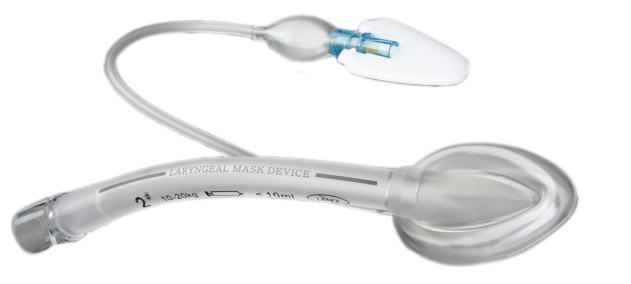
Disposable PVC Laryngeal Mask
Laryngeal mask airway is an inflatable mask that fits over your child's mouth and nose, providing a safe way for your child to receive anesthesia during surgery.
| Ref. No.: | Size: | Applicable people | Color code: | Qty. Cs: |
|---|---|---|---|---|
| NMR104215 | 1.0 | <5kg | Purple | 10 |
| NMR104216 | 1.5 | 5-10kg | Orange | 10 |
| NMR104217 | 2.0 | 10-20kg | Blue | 10 |
| NMR104218 | 2.5 | 20-30kg | White | 10 |
| NMR104219 | 3.0 | 30-50kg | Green | 10 |
| NMR104220 | 4.0 | 50-70kg | Yellow | 10 |
| NMR104221 | 5.0 | >70kg | Red | 10 |
Laryngeal mask airway is an inflatable mask that fits over your child's mouth and nose, providing a safe way for your child to receive anesthesia during surgery.
A disposable PVC laryngeal mask is a medical device that is used to protect the patient's airway during certain medical procedures. The mask is inserted into the patient's mouth and then placed over the larynx (voice box). This allows the doctor or nurse to access the patient's airway without having to intubate them. The laryngeal mask is made of soft, pliable material and has a inflatable cuff that helps to seal the mask to the patient's face.
A disposable PVC laryngeal mask is a type of device that is inserted into the patient's mouth in order to keep the airway open during certain medical procedures. The mask is made of a soft, pliable material that is placed over the tongue and held in place by straps that go around the head. The mask seals off the airway and allows the patient to breathe normally through their nose and mouth.
There are many benefits of using a disposable PVC laryngeal mask, including:
1. They provide a good seal between the patient's airway and the ventilator circuit.
2. They are easy to insert and remove.
3. They are less likely to cause patient discomfort than other types of laryngeal masks.
4. They are less expensive than other types of laryngeal masks.
There are always risks associated with any medical procedure, and using a disposable PVC laryngeal mask is no different. However, the risks are relatively low when compared to other medical procedures. The most common complication associated with using a disposable PVC laryngeal mask is aspiration, which can lead to pneumonia. Aspiration occurs when liquids or food are brought up from the stomach and then breathed in (inhaled). This can happen if the mask is not placed correctly, if the patient vomits, or if the patient has gastroesophageal reflux disease (GERD). GERD is a condition where stomach acid backs up into the esophagus.
If you have a disposable PVC laryngeal mask, it is important to take care of it so that it lasts as long as possible. Here are some tips on how to do so:
-Wash the mask thoroughly after each use with warm water and mild soap. Be sure to rinse all of the soap off of the mask.
-Store the mask in a cool, dry place when not in use.
-Inspect the mask regularly for any signs of damage or wear and tear. If you notice any damage, discard the mask and get a new one.